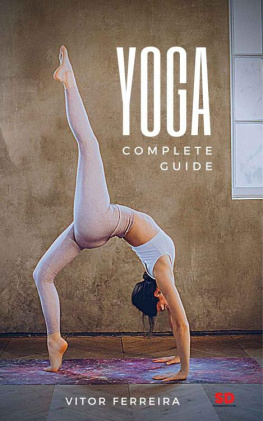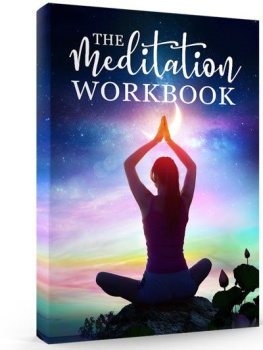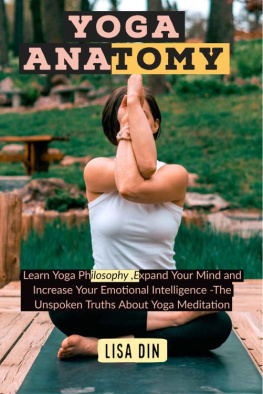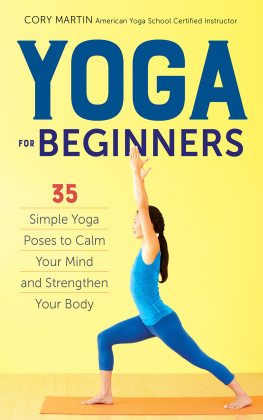As a beginner, there is a lot you should know about yoga and its practice.
Chapter One: Yoga
What is Yoga?
Yoga is a physical fitness regime and a spiritual pursuit. It is an art and a science. It is a holistic system of theory and practice, a unified approach to healing the body, mind, and spirit to achieve balance, peace, bliss, and wellbeing - all at the same time.
Yogas objective is to help every practitioner (yes, even you!) learn to use your body and breath to develop self-awareness around individuality and connectedness to all creation. It really can be, and is for many - that big.
What yoga isnt , is a fad. Yogas philosophical and physical foundations were first recorded about 200 AD in The Yoga Sutras of Patanjali. In the second chapter of the Yoga Sutras, Patanjali lays out the ashtanga , an eight-step approach to reduce the minds restlessness and to experience peace.
These eight-steps, or eight limbs, can help lead every individual toward his or her own connection to peace. Calm, quiet, blissful peace. In this book we will spend most of our time on the Asanas and Pranayama, which are described by Patanjali in The Yoga Sutras as the highest form of self-discipline for body and mind.
Yogas Eight Limbs
Yama: Universal Morality
- Compassion for all living things
- Commitment to truth
- Take nothing that does not belong to us
- Sense of control/responsible behavior
- Limit the drive to achieve and retain wealth
Niyama: Personal Observances
- Purity
- Contentment
- Disciplined use of our own energy
- Self study
- Celebration of spirituality
Asanas: Body postures
- The most commonly-known of all aspects of yoga
- Asana means staying or abiding in Sanskrit
- Physical practice coupled with quieting the mind
Pranayama: Breath Control
- Measuring, controlling and directing breath
- Connecting in-breath and out-breath brings balance, relaxation and peace
Pratyahara: Control of the Senses
- Withdrawal of sensory attachment to external things
- Emotional rebalancing by regaining control over our response to sensory stimulation
Dharana: Concentration and Inner Awareness
- Still the mind to achieve complete focus in one direction rather than many
- Unleashing the powerful potential for inner healing
Dhyana: Devotion, Meditation on the Divine
- Fine-tuned concentration clears the mind
- Recognition of the universal self
- Unhappiness and fear disappear
Samadhi: Union with the Divine (enlightenment)
- No distinction between self and non-self
- Intellectual activity gives way completely to the experience of consciousness
- Discovery of absolute joy
"The needs of the body are the needs of the divine spirit which lives through the body. The yogi does not look heaven-ward to find God for he knows that He is within." - B.K.S. Iyengar
Where, when, and why did it begin?
Its ancient, but thats about all scholars and practitioners can agree on today wit h respect to yogas age. Until recently, Western scholars believed yoga originated in ancient India in approximately 500 B.C.
Within the last hundred years, archaeologists have discovered soapstone seals that many believe show yogis in poses similar to those practiced today. This opens up the possibility that yoga may, in fact, be more than 5000 years old.
So, what about the word yoga? It comes from the Sanskrit word yuj, and means yoke, or to join. Dr. Suzanne Newcombe, in her paper The Development of Modern Yoga: A Survey of the Field (2009), says the word yoga has also been used to mean skill in work, desire-less action, acquisition of true knowledge, indifference to pleasure and pain, addition (in arithmetic) and conjunction (in astronomy).











